By Charles Hilbert
Those rare qualities that set the extraordinary military commanders apart from the average ones were present in Alexander the Great, wrote the Greek historian Arrian, who drew on the account of Alexander’s general, Ptolemy.
Alexander was “most masterly in marshalling an army and in arming and equipping it; and in uplifting his soldiers’ spirits and filling them with good hopes, and brushing away anything fearful in dangers by his own want of fear,” noted Arrian. “And all that had to be done in uncertainty he did with the utmost daring; he was most skilled in swift anticipation and gripping of his enemy before anyone had time to fear the event.”
Alexander III became King of Macedon at the age of 20 in 336 bc upon the assassination of his father, Philip II. In the spring of 334, having spent the last two years settling things in Macedonia and Greece, Alexander set out for the Hellespont to fulfill his father’s plan to bring war to the Persians. The undertaking was made possible by the standing army Alexander had inherited from Philip.
The young Macedonian king made sure to include troops from the Greek city-states in his campaign against the sprawling Persian Empire. The patriotic fervor of the Greeks would go a long way toward sustaining them in battles far from their homeland.
Alexander’s infantry consisted of 9,000 Pezhetairoi, or Foot Companions, divided into six taxeis of 1,500 men each. They were armed with the small, round shield and sarisa, a pike 12 to14 feet long, and were supported by 3,000 hypaspists, most likely armed as hoplites and divided into three chiliarchies of 1,000 men each.
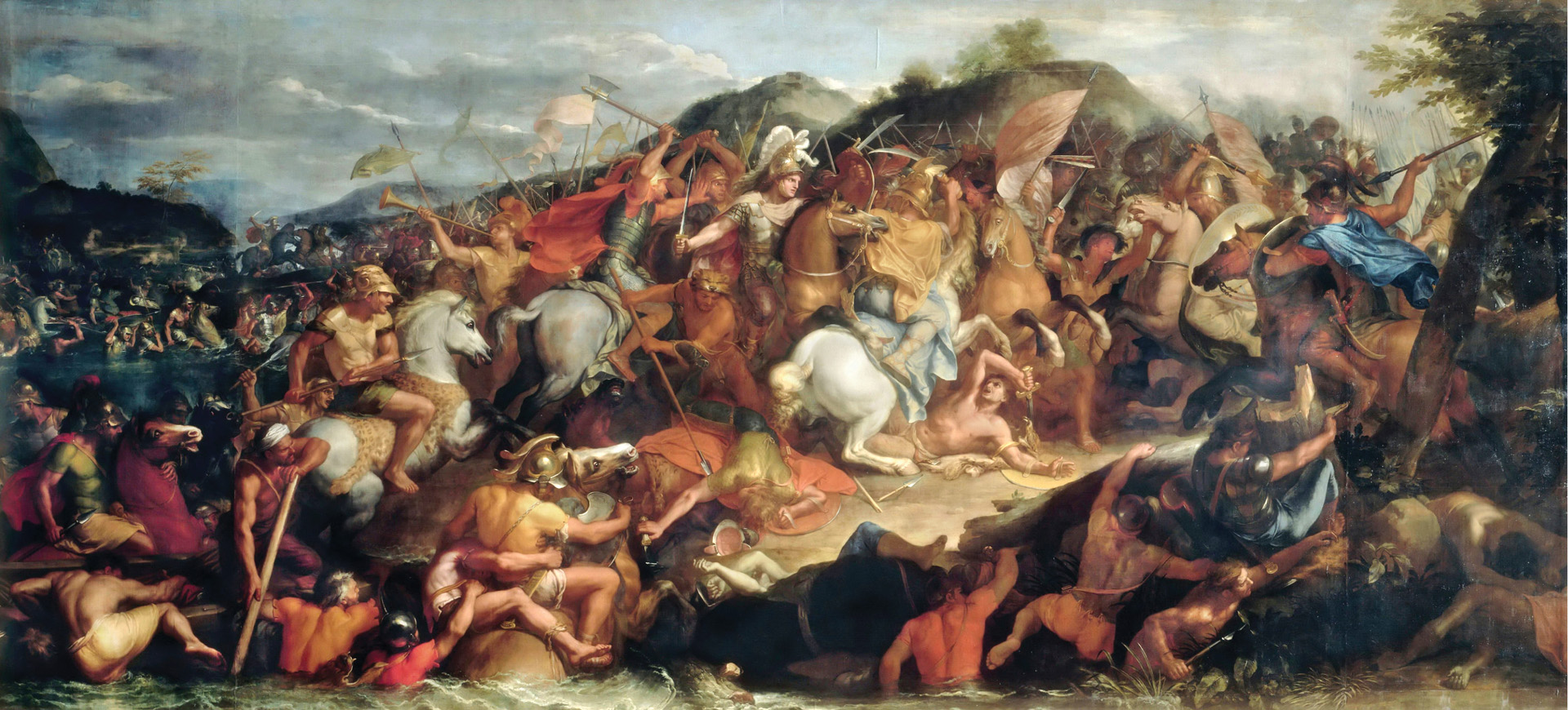
The Greek states of the League of Corinth sent 7,000 hoplites. They were accompanied by 5,000 mercenaries, probably armed as hoplites; 7,000 light-armed Odrysians, Triballians, and Illyrians; 1,000 Agrianian javelin men; and 1,000 Macedonian and Cretan archers for a total of approximately 32,000 men.
Alexander’s cavalry included 1,800 Hetairoi or Companions, a Royal ile, or squadron, of 300, and seven other ilai of 200 or so. They were armed with the traditional cavalry lance, the xyston. The longest cavalry lance was 11.5 feet, and the shortest about 8.5 feet. As a secondary weapon, the horsemen of Alexander’s time, both Persian and Greek, favored the kopis, a curved sword, sharpened on the concave edge of the blade, a deadly, cleaver-like cutting weapon.
Thessaly had always been known for its formidable mounted warriors, and Alexander, whose own mount, Bucephalus, came from Thessaly, employed 1,800 Thessalians in eight ilai, probably corresponding to the Hetairoi with respect to organization and arms. From the allied Greek states came 600 heavy cavalry. Diodorus adds 900 Thracian and Paeonian prodromoi, or scouts, used as light cavalry. In all, Alexander led some 5,100 horsemen to Asia.
While Parmenion ferried the army across the Hellespont from Sestos to Abydos in 160 League triremes, Alexander took a ship and his lifelong companion, Hephaestion, to Troy, where they visited the graves of various heroes.
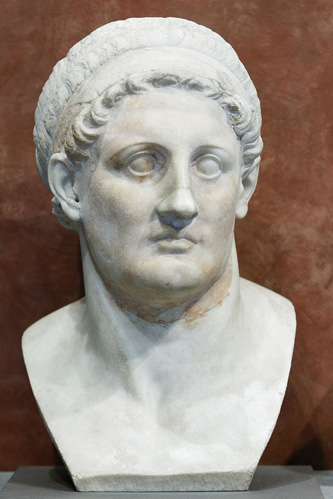
Alexander met the army at Arisbe, marched east to defeat the Persians in bloody hand-to-hand combat at the Granicus River, then turned south and followed the coastline, taking the coastal cities by force or accepting their surrender. The captured cities furnished his army with the necessary supplies and denied the Persian fleet a place to land and resupply. Alexander spent the winter of 334 subjugating the various cities of Lycia and Phamphylia and then turned northeast toward Gordion, which he reached in March 333.
The Macedonian king wanted to visit the temple of Jove and see the famous chariot of Gordion. The yoke of this vehicle was tied with an intricate knot, the legend being that whoever could loosen the knot would become the ruler of Asia. Alexander looked at the knot for a minute or two, and then brutally hacked it to pieces in a show of controlled savagery calculated to impress his onlookers that he had indeed fulfilled the legend, that he was indeed the man for the job of ruling Asia, and that anyone who thought otherwise would end up like the knot.
Alexander left Gordion in late July, having waited until the harvest so that the cities along their route, having surrendered or been taken by units sent ahead, would be able to provide them with supply depots. Sometime in August, Alexander reached the Cilician Gates, a pass over the Taurus Mountains into Cilicia. His advance was so rapid and unexpected that upon learning of his proximity, the Persian forces, which in fact held a strong position guarding the gates, retreated, as Curtius says, “not brave enough to endure the sight of the enemy.” Alexander’s reputation had preceded him.
Alexander entered Tarsus in the first week of September 333, and immediately after bathing in the River Cydnus, fell deathly ill, probably a victim of malaria. Around the same time, Darius III marched out of Babylon leading his army in person, his Greek mercenary commander Memnon having died of an illness. While the Persian king headed west to confront the man who had already detached a good part of his empire, Alexander spent the next two months recovering. By the third week of October, after a march of 577 miles, Darius had reached Sochoi on the east side of the Amanus Mountains. A week later Alexander was out of bed and sending Parmenion, with the allied infantry, Greek mercenaries, Thracians, and Thessalian cavalry, to take the town of Issus and continue south along the coast to secure the Beilan Pass, which led into Syria.
Alexander spent the first week of November pacifying western Cilicia. He then returned to Soli and held musical and athletic competitions. His delay was intentional. With winter coming on, Darius could not remain at Sochoi because his army would soon run out of supplies, and resupply was difficult in a region far from the coast with no navigable rivers. He would have to move soon. Alexander knew that Darius had four choices: to attempt the Beilan Pass, which debouches onto the coastal plain 35 miles or so south of Issus where Parmenion was waiting in ambush; hold the pass in the face of Alexander’s advance; withdraw eastward; or await the Macedonians in the plains of Syria as long as their supplies held out. Darius, however, was aware of Parmenion and was not about to attempt the Beilan Pass, nor was he about to march back the way he had just come. Alexander advanced to Mallus. He left there on the first day of the second week of November, heading toward Issus, which he reached two days later. There he established a field hospital for the sick and wounded. This seems to indicate that the last thing he expected from Darius was an offensive movement westward. Darius decided to do the last thing his opponent expected.
The ancient accounts suggest that while Alexander took the coast road south, Darius, persuaded by his courtiers that the Macedonians delayed in Cilicia only out of fear of the Persian king and his huge army, left Sochoi and marched north by an inland route through passes in the Amanus Mountains, both armies passing each other in a single night. It is most probable that Alexander did not expect Darius to leave Sochoi in the plains of Syria, a location much more suited to the Persian way of warfare, which relied heavily on cavalry, and was unaware of Darius’s northward movement. Surely the Persian king, already hesitating to attempt the Beilan Pass in the face of Parmenion’s force, would not have blindly crossed the passes above Issus without certain knowledge of Alexander’s whereabouts.
Upon learning of Alexander’s position at Issus, Darius left Sochoi heading northwest, intending to come upon the Macedonian rear. He sent his war chest to Damascus with what the Roman historian Curtius calls “a modest guard.” All ancient accounts of the Persian army, which numbered as many as 600,000 men, are greatly exaggerated, and this mention of “a modest guard” is our first indication that the army of Darius was probably not much bigger than the Macedonian force. If Darius had had the huge army attributed to him by the ancients, he might have sent his valuables to Damascus with more than “a modest guard.” As it was, he did not have the numbers to spare.
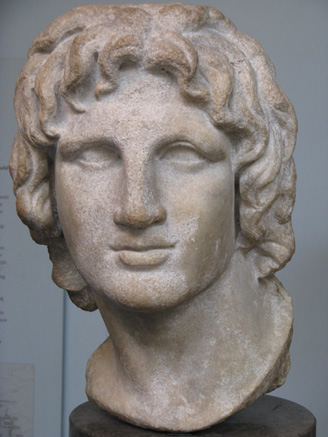
On the fourth day of the second week of November, Alexander reached the mile-high pass of the Pillars of Jonah, while at the same time the Persians began crossing the Amanic Gates. The next day Alexander reached Myriandrus, where it rained all night, and the Persians entered Issus, where Alexander had left his sick and wounded. According to Curtius, “All whom by the instigation of the furious Persian nobles with barbarous cruelty having their hands cut off and [their wounds] cauterized, he [Darius] ordered to be led around, so that they should see his troops, and with all having been seen fully, to report to their own king what they had seen.” The next day these pitiable survivors of the Macedonian field hospital arrived in Alexander’s camp at Myriandrus, and Darius marched south.
Darius had cut Alexander’s line of communication; the Macedonians could not retreat. Since the Persian fleet still dominated the eastern Mediterranean, they could not resupply. Darius had but to hold the line of the Pinarus to ensure victory; he did not have to win the coming battle. He just had to make sure that he did not lose. For the Macedonians and their allies it was a matter of victory or death.
Alexander, finding it hard to believe that Darius was now astride his communications with his whole army, for it might have been just a raid or diversion, sent off some of his Hetairoi in a small ship to reconnoiter the gulf of Issus. It must have taken a few hours for them to sail north and then back to Myriandrus, for when they returned and reported the presence of the Persians, Alexander called his officers together for a pep talk. Alexander reminded the Macedonians how the Persians on multiple occasions had undertaken to conquer their lands, destroy their cities, and violate sacred laws and rights of men and gods, reported Curtius. This time, the tables were turned on the Persians, and the Macedonians should exchange their infertile mountain lands for the rich fields and pastures of the Persians.
It must have been late in the day by then, so Alexander ordered the men to have dinner while he sent ahead some cavalry and archers to secure the southern end of the Pillars of Jonah. When it was dark, he followed with most of the army. It is probable that he left in Myriandrus, to guard the Beilan Pass, the allied Greeks, who are not mentioned in the sources regarding the actual battle, and some cavalry just in case Darius had left a corps behind to attack Alexander’s rear. The fact that Darius did not is a further indication of the small size of the Persian army.
At this point, Alexander was probably leading north about 25,000 infantry: 12,000 in the phalanx, 5,000 heavy-armed mercenaries, 7,000 light-armed infantry, and 5,000 cavalry. Darius probably did outnumber Alexander in cavalry and light troops, but the armies were roughly equal in professional heavy infantry, or what Arrian calls hoplites. Both sides were headed for a fateful rendezvous at the River Pinarus; Darius got there first, probably around the time the Macedonians were eating dinner.
The Pinarus is the modern Payas River in Turkey, and Callisthenes describes its course as it bisects the battlefield: “There is at this place an interval not more than four and ten stadia from the sea till to the foothills of the mountain [about 2,800 yards]. Through this extends the aforementioned river at an angle.”
From the mouth of the Pinarus upstream for about 500 meters the river bed is bordered by low banks ranging from 1 to 2 meters in height, according to a 20th-century geological survey. For the next 1,000 meters the river is only five to 15 meters wide with steep banks. Farther inland, the banks are extremely steep, but about 2,740 meters from the mouth of the river is a narrow ford. Cavalry could have crossed the Pinarus near its mouth. Where the banks were steep, infantry could have crossed but not cavalry. Where the banks were extremely steep, neither cavalry nor infantry could have crossed, except at the ford.
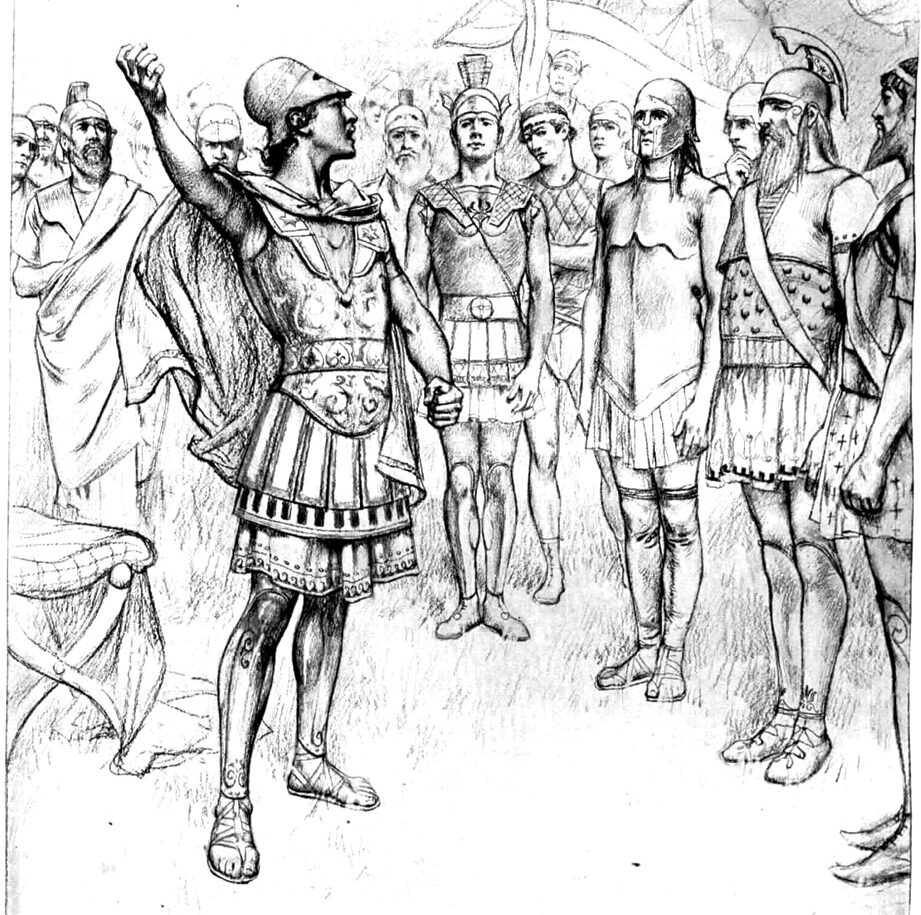
By midnight, Alexander had reached the Pillars of Jonah, six miles north of Myriandrus. He halted there while the advance guard of cavalry and archers went on to secure the northern end, eight miles south of the Pinarus. Darius had probably spent the day forming his camp, much like the camp of Cyrus the Great as described in Xenophon’s Cyropadeia: “All the officers had banners over their tents, [the aides] were acquainted with the location of the various officers and were familiar with the banner of each one … he dug a trench 60 feet wide and 10 deep and encircled the camp with the baggage-wagons of his train like a wall.”
At dawn on the seventh day of the third week of November, 333 bc, the first units of Alexander’s army came down the road leading out of the northern end of the pass. As the Pillars of Jonah Pass is almost a mile high and in places so narrow that only four infantrymen or two horsemen can march abreast, the process of negotiating the entire army through these narrows must have taken half a day, while Alexander’s advance scouts ranged far ahead. It was, at first, necessary to march in column for hours. As the northern end of the pass finally fell away behind them and the ground widened, Alexander slowly brought his column into line, one taxeis after another, between the mountain to his right and sea to his left. This must have necessitated many halts and dressing of lines, occupying much of the day. While the Macedonians marched in column, their cavalry followed the infantry. According to Callisthenes’ eyewitness account, “As soon as Alexander came into the open fields he set [the army] in order, ordering all of the phalanx to form line, and to make the depth of the phalanx 32 [men], after this in turn to 16, and last, being near the enemy, to 8.” It appears that he thinned and lengthened his line of battle, as Plutarch says, to prohibit the Persians from executing an envelopment.
Arrian furnishes more detail: “As into the open space they advanced, he now drew up the army for battle, those first on the right wing toward the mountain, the agema of the foot.” This was the Royal Agema of the hypaspists, 1,000 strong, posted on the extreme right, the position of honor. To their left were the rest of the hypaspists, a force of 2,000 led by Nikanor, son of Parmenion. Thus followed, toward the sea, the taxeis of the Pezhetairoi, each bristling with 1,500 sarisai, first that of Koinos, then those of Perdikkos, Amytas, Ptolemy, Meleager, and, on the extreme left, Craterus, in command of the infantry of the left, the position he had occupied at the River Granicus and would once again hold at Gaugamela. Parmenion was in overall command of the left wing and had been ordered to keep his flank against the sea so that the Persians could not get around it. It is clear that Alexander was very concerned that Darius would attempt a double envelopment, and he took every measure to prevent this.
When Alexander’s approach was reported to Darius by some of the locals, he sent some of his cavalry and light-armed troops south of the Pinarus to screen the deployment of his infantry phalanx along the banks of the river. It seems that Darius planned to cover the first 500 yards or so from the river mouth inland with these troops once he had positioned his infantry. Arrian reports: “First of the hoplites the Greeks, the mercenaries, he drew up … opposite the phalanx of the Macedonians.”
Perhaps Darius could see the Macedonians off in the distance, and, surveying the ground south of the Pinarus, drew up his mercenaries in the only place where the Macedonians would be able to attack in a phalanx formation across the dry, rocky bed of the river. Darius might have had about 15,000 Greek mercenaries. To augment this force he added perhaps another 15,000 Persian Kardakes, young nobles, who, according to Arrian, were probably armed as Greek hoplites, but lacking their traditions, training, and discipline. They were stationed on either side of the Greek mercenaries, and a similar formation would be adopted once again at Gaugamela. Arrian says: “The ground received in that place so many men, they drew up in order of battle in a double phalanx.” Because of the narrowness of the battlefield, both units of the Persian phalanx must have been 16 ranks deep, twice as deep as Alexander’s eight ranks and so equal to Arrian’s double phalanx.
To their left, stretching toward the mountains, Curtius tells us, “Aristomedes, the Thessalian, had 20,000 barbarian foot.” Arrian mentions 20,000 men to the left of the Persian phalanx. Polybius calls them “peltasts [light-infantry] … bordering on the mountains.” Darius’s soldiers covered the north bank of the Pinarus from sea to mountain; however, most of these were light infantry and archers, and of his hoplites only the Greek mercenaries were the equals of the Macedonians. Darius took up his own position, conspicuous in his high, ornate chariot, behind the Greek mercenaries, surrounded by his bodyguard of 3,000 noble Persian knights. To threaten Alexander’s right he moved some peltasts, probably across the ford, 3,000 yards from the sea onto the high ground south of the Pinarus.
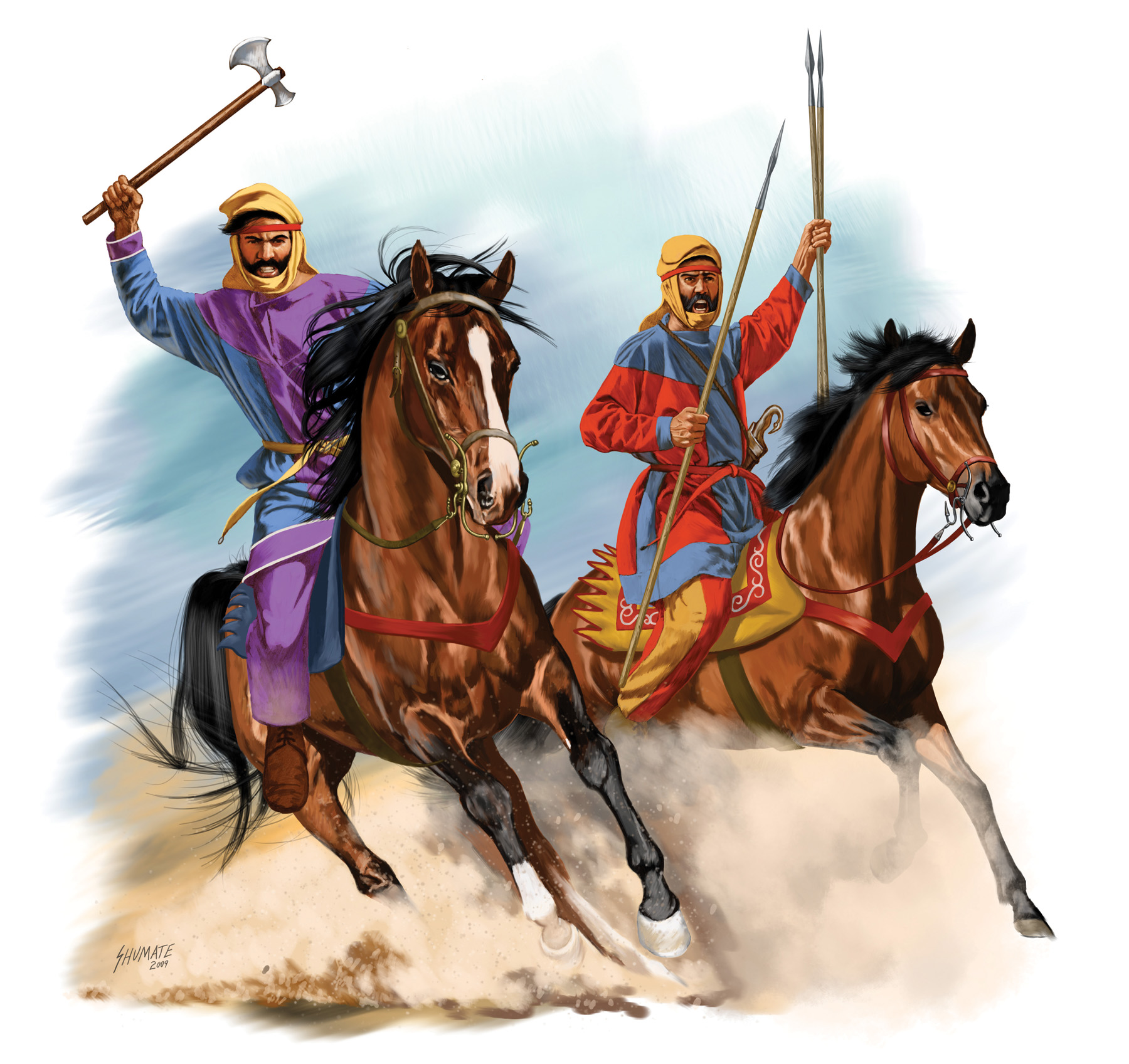
With his infantry in place, Darius recalled the cavalry and light troops that he had sent across the river to screen his dispositions. He seems to have divided his cavalry equally on both wings but then realized that the rising ground to his left was unsuitable for heavy cavalry. As Curtius tells us, “The horses and horsemen of the Persians were equally heavy, covered as far as their knees with rows of plates.” They were armed with two short spears and a sword. Darius then sent most of his cavalry over to his right under the command of Nabarzanes, probably leaving only some light horse somewhere near the narrow ford. Along any part of the northern bank that looked a little too accessible he fixed pointed stakes.
Alexander moved his line forward slowly and methodically, screened by his advanced guard of light cavalry, bowmen, and slingers. When the ground allowed, he brought up the Hetairoi and the Thessalians from column into line and led them to the right. He sent the allied horse to Parmenion on the left.
Although many historians have perpetuated the myth of the triangular cavalry formation, this wedge is the result of mistranslations of the Greek word “embolus” and the Latin word “cuneus.” For various common sense reasons the cavalry wedge did not exist in reality, at least not in combat. Alexander used his cavalry like the beak of a trireme. Formed in attack columns they would ram their way through and exploit any opening in his enemy’s line.
Polybius relates that horses cannot be drawn up in formation more than eight ranks deep and that between each of the ilai there must be an equal interval in the lines so that the ilai can maneuver. Parmenion perhaps drew up his 600 horse in three ilai of 200, with 25 troopers in each front rank, each taking up two yards of front, so that each ile would be 50 yards wide and 50 deep, each horse and rider in each ile taking up at least six feet. This, with the intervals mentioned by Polybius, would just about cover half of the 500 yards from the sea inland, which on the northern bank of the Pinarus was occupied by Nabarzanes’ heavy cavalry.
On the right still moving slowly and although in sight of the enemy far out of missile range, Alexander must have draw up the Hetairoi and Thessalians, each 1,800 strong, in two lines of attack columns in a checkerboard fashion, the Royal Ile of 300 men roughly 75 yards wide and 50 deep, the other seven ilai of some 200 men each, roughly 50 by 50 yards. Including intervals, the right wing cavalry occupied a frontage of some 800 yards. The Thessalians were probably drawn up to cover the intervals in the first line.
With Darius’s screen of light troops and cavalry withdrawn and reposted along the northern bank of the Pinarus, Alexander also repositioned his advanced guard, which had been out in front functioning as a skirmish line. He moved the prodromoi and the Paionians, possibly 900 light horse, to the right in front of the Hetairoi, supporting them with archers and gradually strengthening his right wing for a movement toward the ford. The light horse would be the first across, formed up in small attack columns and supported by the covering fire of the bowmen. The heavy cavalry would follow and take the Persians in their left flank.
To support Parmenion, Alexander sent the Cretan bowman, at least 500 strong, and Thracian light troops and foreign mercenaries, possibly as many as 2,000, probably armed as hoplites, to extend his infantry line to the left as far as possible. This was yet another precaution against a possible double envelopment by the Persians.
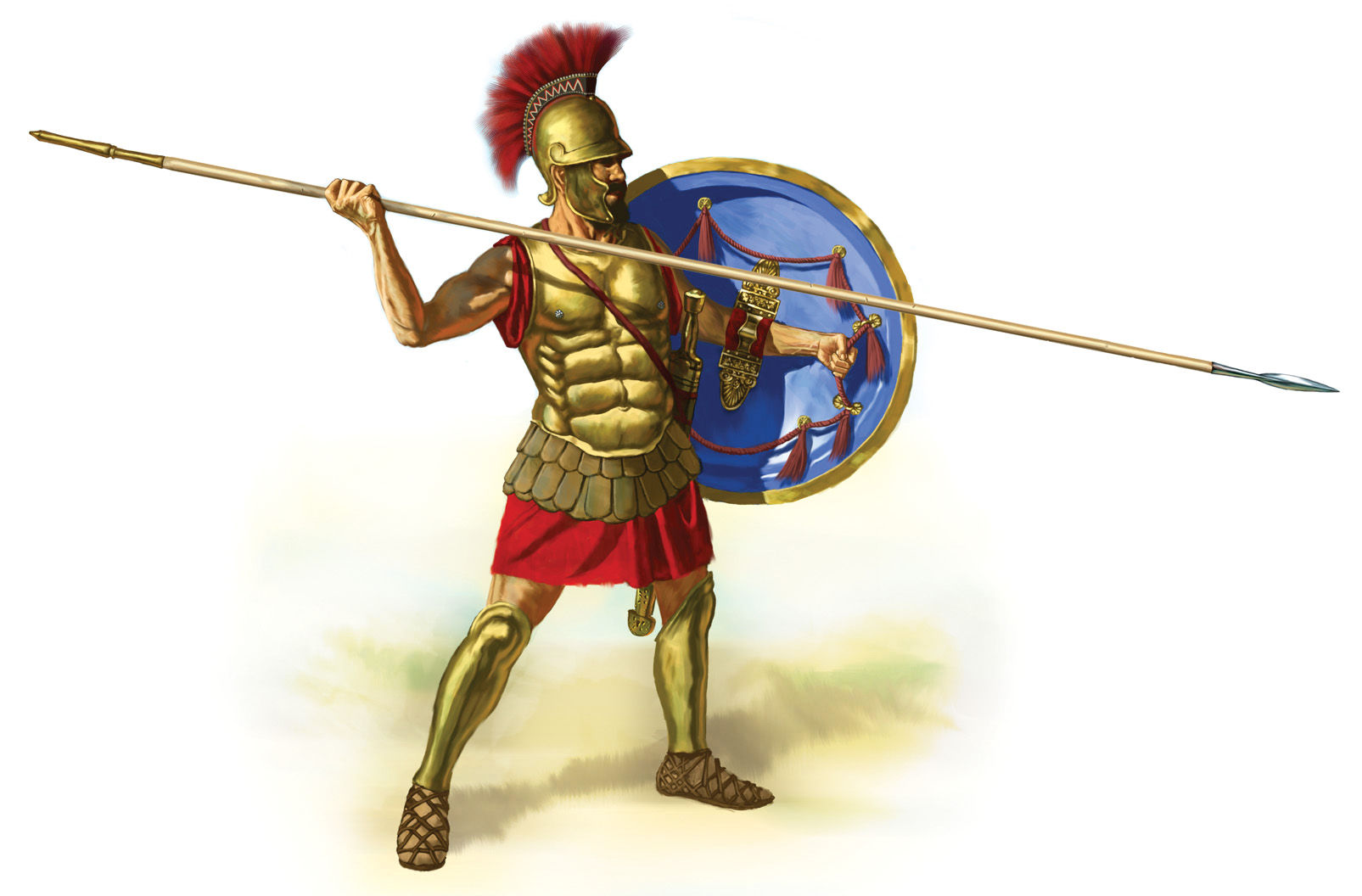
As Alexander slowly advanced toward the river, he also protected his right. Arrian preserves Ptolemy’s firsthand account: “He stationed the Agrianians … some … horsemen and bowmen, formed at an angle toward the mountain … so that on his right the phalanx was drawn up separated into two wings, one thus before Darius and all the Persians beyond the river, and the other thus against those formed up on the mountain…. Since those [Persians] drawn up on the mountain did not come down, a sally against them by the Agrianes and … the bowmen … repulsed them easily from the foot of the mountain; they fled to the top.” These Persian troops were probably peltasts and could do no more than threaten the Macedonian right. They were no match for the aggressive Agrianians.
Alexander further strengthened his right, slowly gathering his forces for a decisive blow. He withdrew two ilai of Hetairoi from the right of the hypaspists and sent them over to the right wing, screened by the light horse and the bowmen where they perhaps drew up behind or on the far right of the rest of the Companions. Still wary of a double envelopment—he could see hordes of Persian light troops across the river—Alexander filled the gap left by the two ilai with the Agrianes and mercenary hoplites who had been out on his right, chasing the Persian light troops up the mountain. Alexander had now secured both his flanks. His infantry line extended to the sea on his left, and he had managed to stretch the right end of his infantry line beyond the Persian left. A small cavalry detachment fixed in place those Persian light troops farther up the mountainside, removing them as a factor in the battle. At that point, his line, from sea to foothills, was probably a bit over a mile and a half long.
The Macedonian line of battle slowly advanced and then halted for some time. Alexander made sure that his army maintained proper formation by riding in front of it and personally dressing the ranks. He was probably accompanied by about a half dozen bodyguards and some of the young sons of noble Macedonians who were his personal attendants. This must have been the last halt before the final advance against the Persians, and both armies must have been out of arrow range, more than 200 yards apart. Arrian records Ptolemy’s eyewitness account: “Then Alexander, riding along everywhere, called to his men to be brave, not calling up the leaders alone by name … but both iliarchs and captains by name and some of the foreign mercenaries, as many as were deemed worthy or well known with respect to some manly deed. And from every side a shout arose not to delay but to fall on the enemy.” Alexander, however, restrained them for the moment.
As he slowly proceeded toward his own left, Alexander was riding downhill. At some point, being on higher ground, he must have seen almost the entire Persian cavalry drawn up on his left by the sea, with only the Greek allied horse to oppose them. Alexander now realized that the Persian troops on the mountainside were merely a decoy and posed no real threat but that Darius intended to use his numerical superiority in heavy cavalry to break through the Macedonian left and either take the phalanx in flank and push it toward the mountains or in the rear and push it into the river. He ordered the Thessalian horse to ride quickly behind the phalanx and report immediately to Parmenion. It was now about 4:30 pm, and a race against time began as each commander seems to have planned a breakthrough on his opponent’s left. The first to accomplish such would surely be the victor.
As soon as he knew that the Thessalians were in position, Alexander must have quickly assumed his station on the right, at the same time ordering the phalanx forward. This is probably when, according to Curtius, “Both sides were in sight, but beyond missile range, when the Persians first raised up a disordered and savage clamor. It was returned by the Macedonians … echoed by the ridges and vast forests of the mountain.” Both sides quickly came within arrow range, about 150 yards between them, and the Persian bowmen let fly a cloud of missiles. Nabarzanes’ heavy horse charged across the river and drove into the Thessalians. Darius, perhaps not fighting a merely defensive battle but alternatively pinning his hopes on a breakthrough on Alexander’s left, had struck first, with Nabarzanes leading probably 4,000 heavy cavalry across the shallow estuary of the Pinarus.
It was suicide for cavalry to remain stationary to receive the charge of their opposite number, so the Thessalians must have countercharged. They seem to have gotten the worst of it at first. Curtius mentions “one ilai trampled by the impetus” of the initial Persian charge. Both sides became disordered from the violent shock of the collision. The Thessalians were first to reform and first on the offensive. They crashed into the Persians and, cutting them down, pushed them back.
Ptolemy describes the action on the Macedonian right: “As they came within missile range, those in front of Alexander and Alexander himself, having drawn up on the right, at a run, rushed into the river to drive away the Persians by the swiftness of their approach … before the bowmen could hurt them.” The Persian composite bow has an effective range of 100 to 200 yards; Persian archers were strung out along the northern bank of the Pinarus, and they must have been especially concentrated at the ford, where there was also a small body of Persian horse. Alexander’s bowmen now advanced and engaged their opposite numbers in a firefight, while the prodromoi and light horse that Alexander had stationed in front of the Hetairoi charged toward the narrow ford.
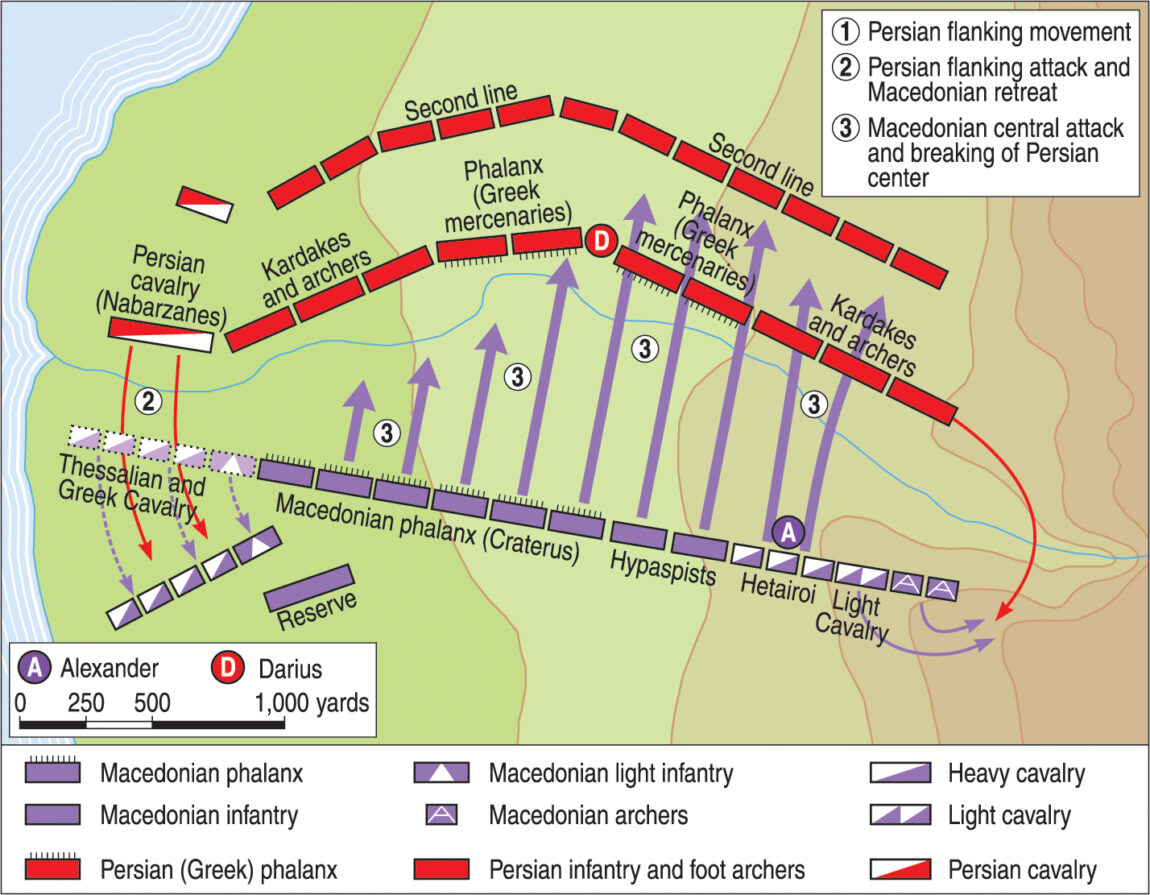
This passage, only 30 yards wide, would have permitted the horse to advance in a column four or five abreast. With the Macedonian bowmen providing covering fire, probably from both the western and eastern sides of the ford, the light horse charged into the shallow, rocky streambed through a storm of Persian arrows. On the south side of the river, the path descended steeply into the riverbed, but on the north side it rose more gradually along the flattened river bank.
It must have been a breakneck, adrenalin-pumping ride, first down the precipitous southern bank, through the slippery riverbed, arrows bouncing off breastplates and helmets, men and horses struck, then up the gentle northern slope and out into open order, striking the Persian bowmen and peltasts with javelin and sword. Arrian dryly reports: “Immediately as hand-to-hand combat developed, those of the Persian army … stationed on the left wing were put to flight.” As the Persian light troops and cavalry scattered, pursued by Alexander’s light cavalry, the Macedonian king led the Hetairoi across the river in column and then quickly wheeled into line of battle facing the Kardakes on the left of the Persian phalanx. He had probably left the Agrianes and mercenaries in line, facing and fixing in position the Persian light troops directly across the river, with orders to follow, once the ground in front of them had been cleared by the cavalry attack.
In the center, the taxeis of the Macedonian phalanx were slowly struggling to maintain formation as they crossed the bed of the Pinarus in the teeth of Persian arrows. As they reached the northern bank, the taxeis of Ptolemy became separated by a triangular headland from the taxeis of Amytas to its right. From the high bank, down into the gap, poured Darius’s Greek mercenaries, with gravity adding to the momentum of their heavy armor and racial hatred of the Macedonians in whose eyes they were renegades fighting for barbarians against their own kin. They struck the Macedonians’ unshielded right sides with sharp, deadly force. Arrian says, “And here fell Ptolemy the son of Seleucus, being a brave man and about 120 of the others of the Macedonians.”
The taxeis of Craterus and Meleager to Ptolemy’s left were engaged with the Kardakes to the right of the Greek mercenaries; the three taxeis to Ptolemy’s right were faced by higher banks and the rest of the Greek mercenaries. A savage battle developed as Darius’s Greeks, holding the high ground, stabbed downward at the Macedonians, slipping and sliding as they tried to climb the banks, stabbed upward with their longer sarisai.
On the Macedonian left, the cavalry action continued as the Thessalians were pushed back by Nabarzanes’ greater numbers. Supported by the fire of the Cretan bowmen, the Thracian light troops, and with the backing of the mercenary hoplites, they were able to hold their ground. Darius’s flank attack was bogged down in a confused action of mixed cavalry and light troops.
Alexander had won the race. He now led the line of Hetairoi against the left side of the Kardakes posted to the left of Darius’s Greek mercenaries. Lacking the discipline of the Greeks or Macedonians and witness to the slaughter and flight of their light troops to their left, it seems that the Kardakes did not wait to receive the charge of the Hetairoi. Their rear ranks melted away and fled into the trackless ravines north of the river, which caused the rest of their phalanx to withdraw in disorder. Facing them across the river were the hypaspists. Now, with the retreat of the Kardakes these troops were able to cross the Pinarus unopposed, and, wheeling to their left, strike Darius’s Greek mercenaries on their left side and push them back from the river. This relieved the pressure on the taxeis facing the mercenaries, and they were able to advance.
Alexander now headed straight for Darius, whose 3,000-man mounted bodyguard, led by Darius’s brother Oxathres, countercharged the Hetairoi. Both sides crashed together, Oxathres cutting down some of the Macedonians, Alexander receiving a sword wound in the thigh. The Macedonian king had been a fighting man, a warrior, from the age of 16, and he was not afraid to draw attention to himself on the battlefield. He was ostentatiously and conspicuously dressed in the most expensive armor money could buy; his helmet was festooned with plumes and feathers, now all of course spattered with blood and gore.
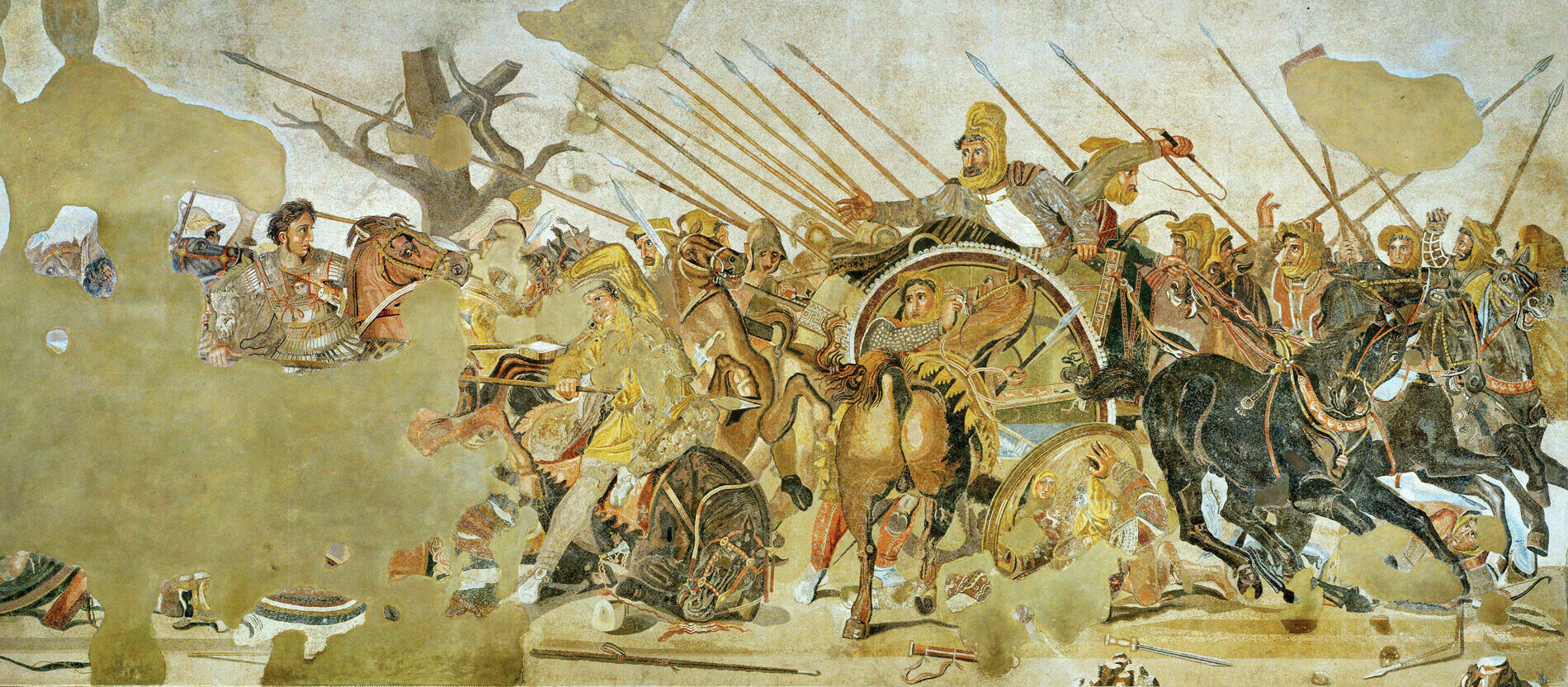
As he cut his way forward on his great black horse, the animal itself steaming with foamy sweat and the blood of his rider’s victims, Alexander must have seemed to Darius, mere yards away, as the unstoppable god of war. The Hetairoi and their king were experts with the cavalry spear, the xyston; they stabbed their noble Persian counterparts in the face or ran them completely through the body, eventually dropping their broken spears and drawing cleaver-like kopides to relentlessly hack their bloody way through the heaving mass of Darius’s bodyguard.
Faced with what must have looked like imminent and unavoidable death in the form of an unbelievably aggressive, superhuman, and ever closer Alexander, Darius was probably close enough to see Alexander’s cold, gray eyes burning with battle madness. With his left wing completely gone and probably feeling the pressure of the Macedonian phalanx to his front as it pushed back his Greek mercenaries, Darius realized that the battle was lost. He turned his chariot to the rear and left the field.
Nabarzanes, although he seems to have been holding his own, learning of the flight of his king and observing the repulse of Darius’s mercenaries also withdrew, possibly in good order and supported by his light troops. In turn, he must have supported what was left of the Greek mercenaries, for they were able to remain in formation and fight their way out of the battle. Eight thousand eventually made it to Tripoli and sailed for Egypt. The rest of the Persians were not so lucky. As they fled headlong, they were pursued by the Thracian light troops, whom Livy calls “the Thracians, not otherwise than wild animals released from long confinement.” They were not happy unless they returned from battle “singing … the heads of enemies fastened upon their spears.”
There was now a general rout of the Persians, as the horse of the bodyguard followed the peltasts and Kardakes into the broken ground north of the Pinarus. Alexander, seeing his army victorious, now turned to the pursuit of Darius himself. Darius bounced along as far as the ground allowed until he was forced to trade his chariot for a horse.
Just as the number of Persian troops on the battlefield is impossible to ascertain definitively, so too is it impossible to compute the true numbers of Persian dead and wounded. However, the side that breaks first and offers its back to the enemy sustains the most casualties, so the Persian dead and dying must have littered the ground for miles in and around the ravines north of the Pinarus. The ruthless Thracians must have had a happy, bloody time of it. As for the Macedonians, Curtius reports 450 killed and 4,500 wounded in what was clearly a desperate action for both sides.
Alexander kept up the pursuit as long as daylight lasted, but the battle had started late in the afternoon and Darius had a bit of a head start. However, Alexander did not return empty handed. Ptolemy watched him bring back “the chariot of Darius… and his shield and cloak and bow.” He also captured Darius’s camp along with his wife and mother and 3,000 talents. The story of Alexander’s chivalrous treatment of his women captives is well known.
As Alexander and his Companions, covered in the dust and blood of battle, marveled at the treasures left by Darius, the Persian king was riding alone through the darkness, headed for the Euphrates and what was left of his empire. Darius and Alexander would meet one last time at Gaugamela, and then Alexander would relentlessly pursue him over the long miles of the Bactrian wilderness until the new ruler of Asia stood over the lifeless body of the last Achaemenid king of Persia.
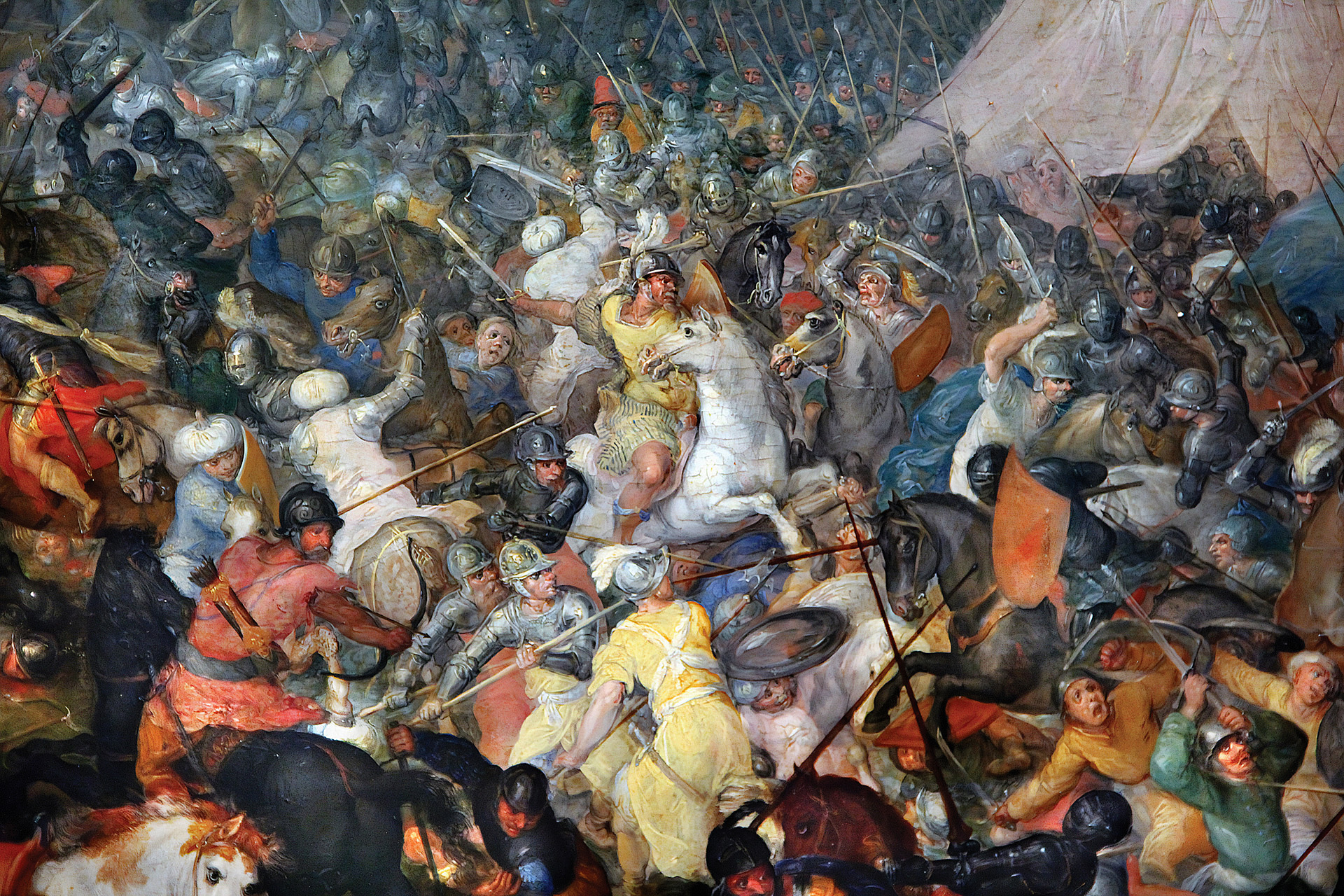

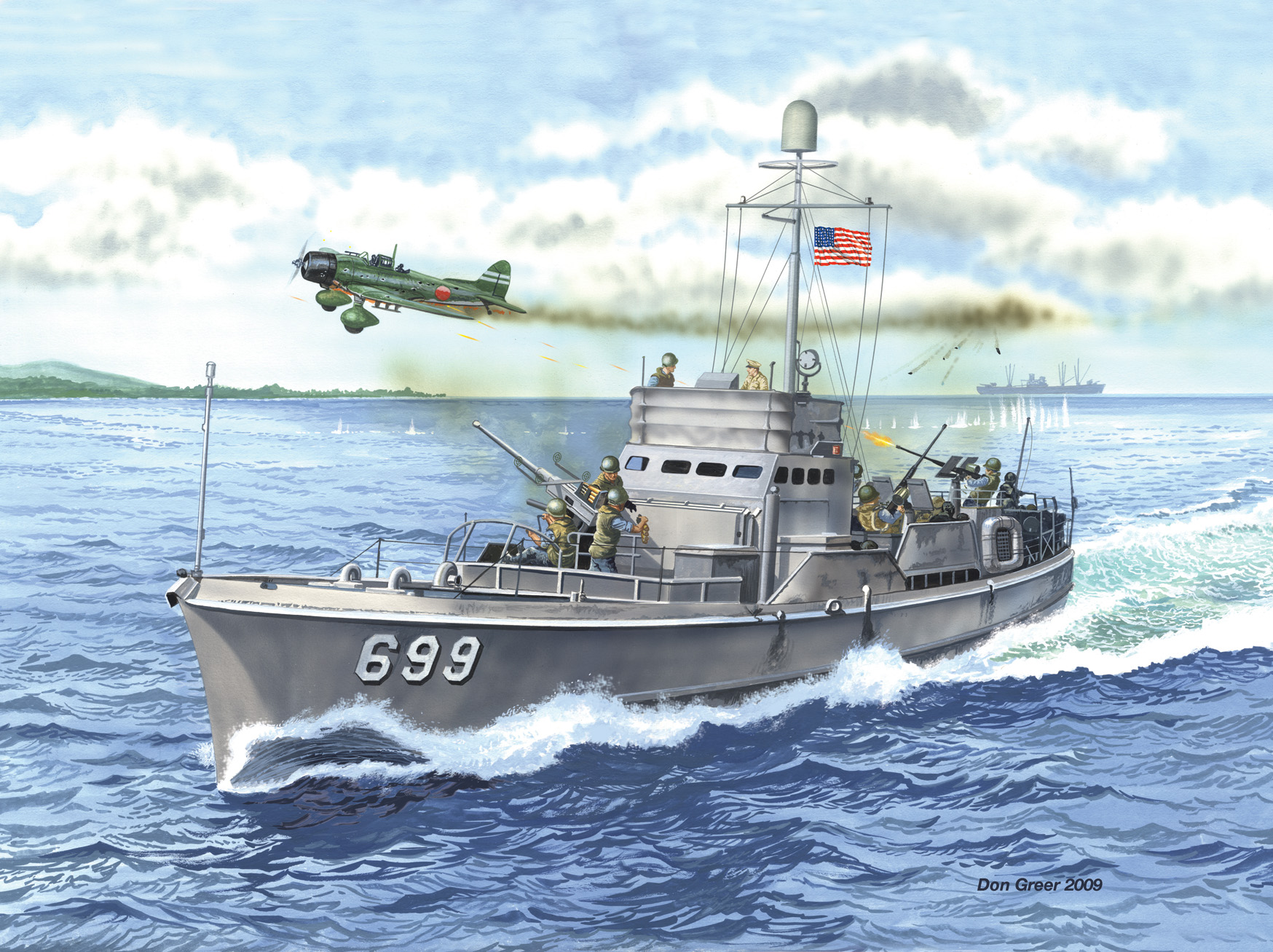
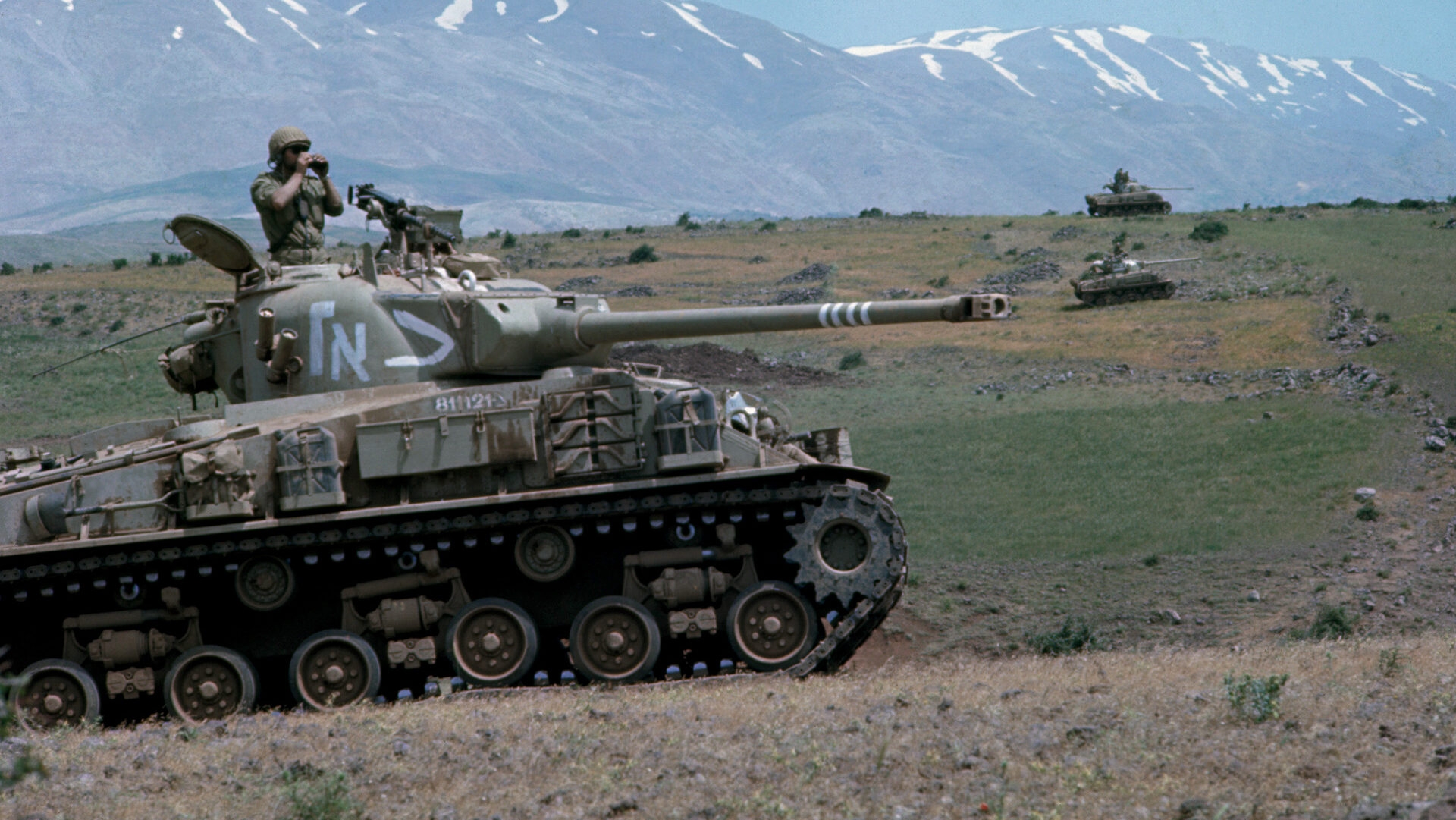
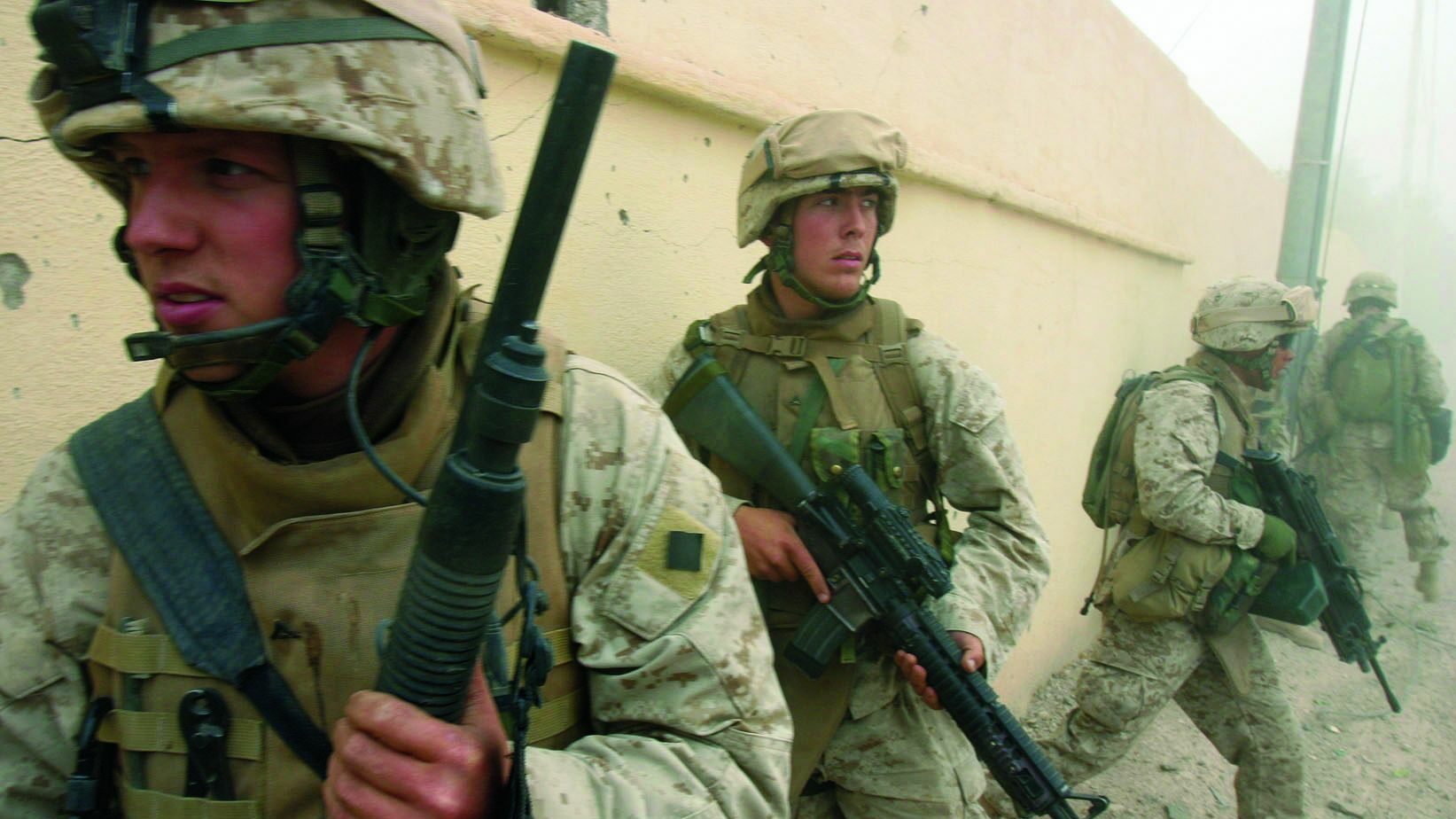
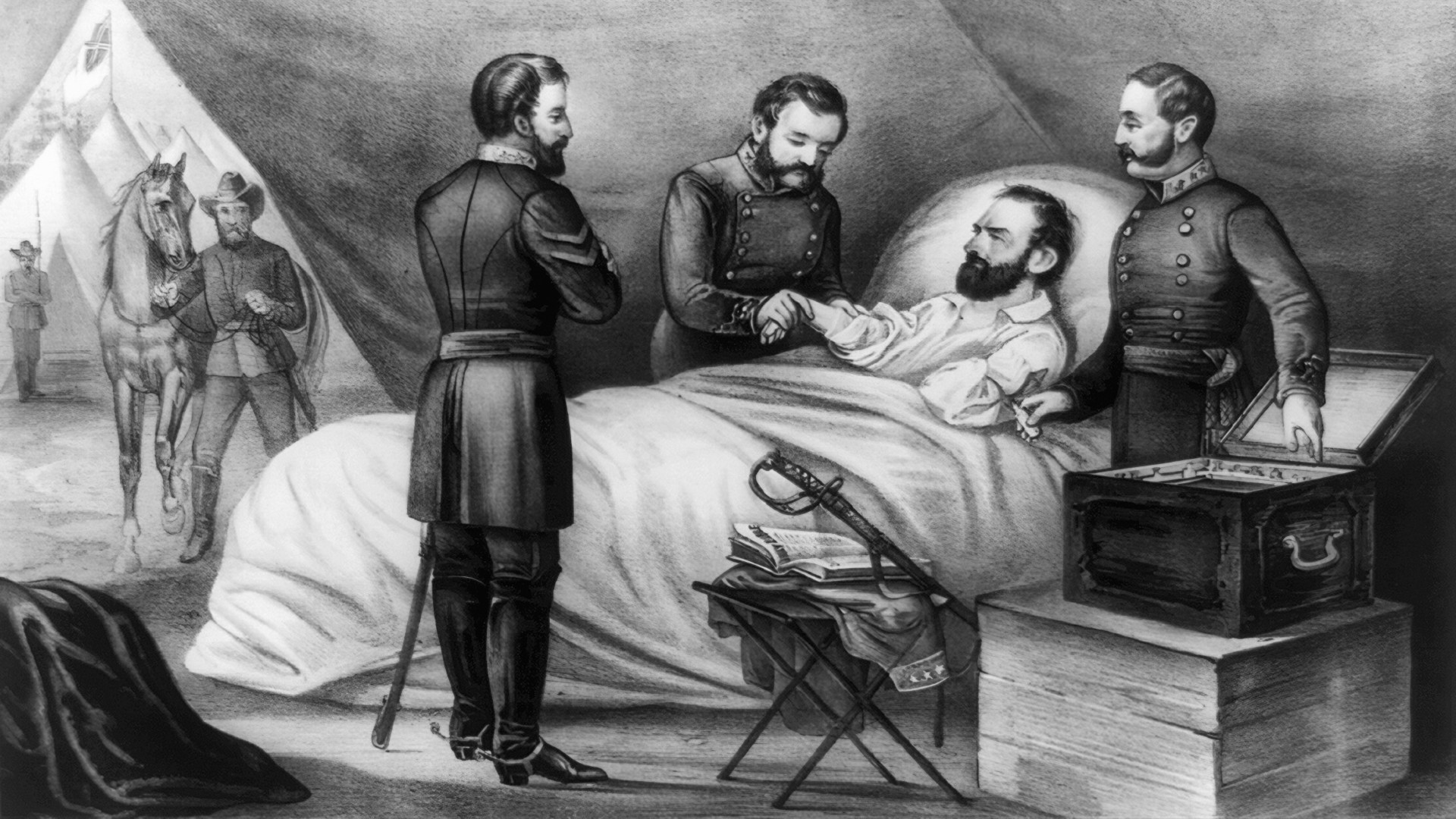
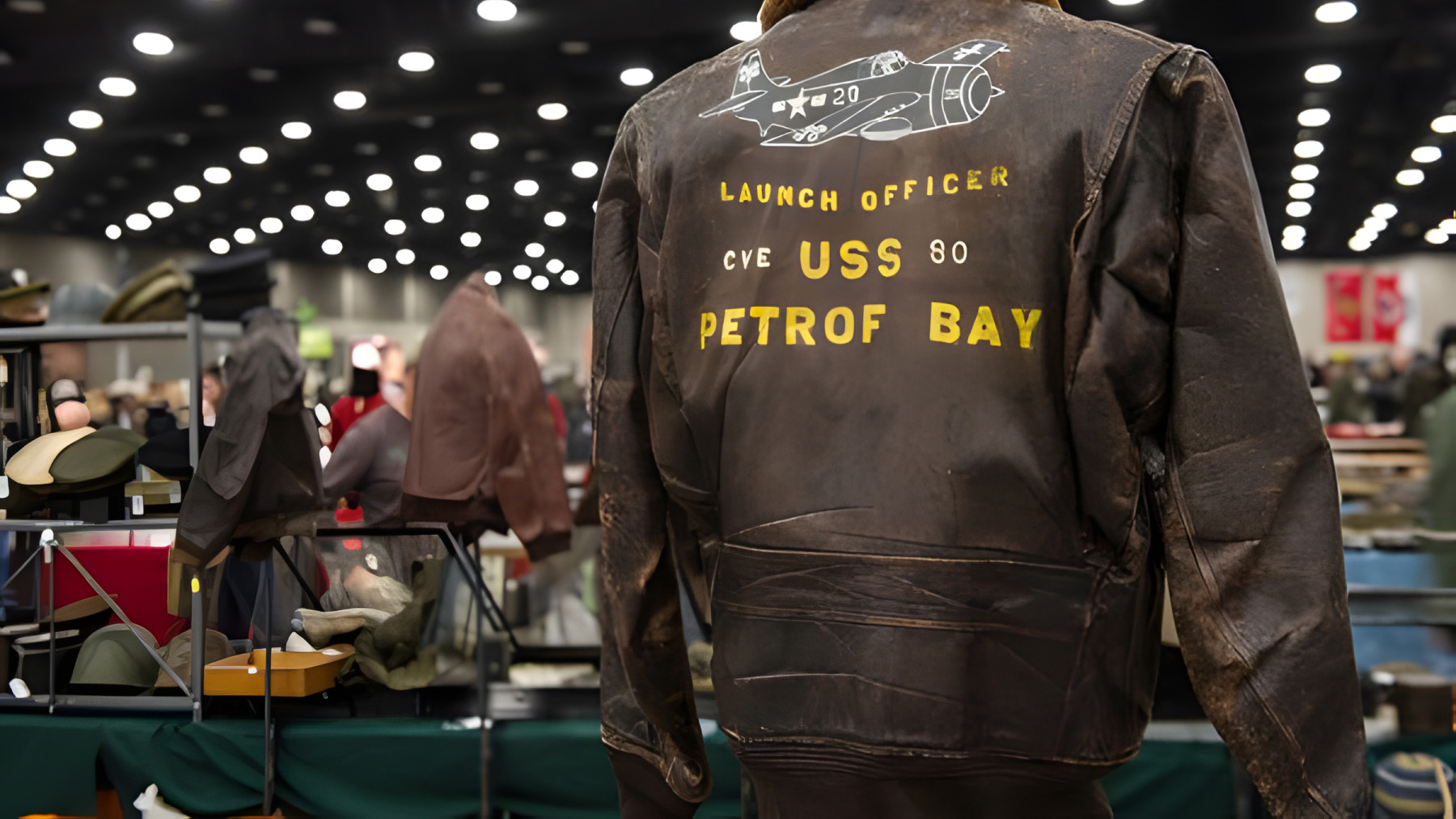
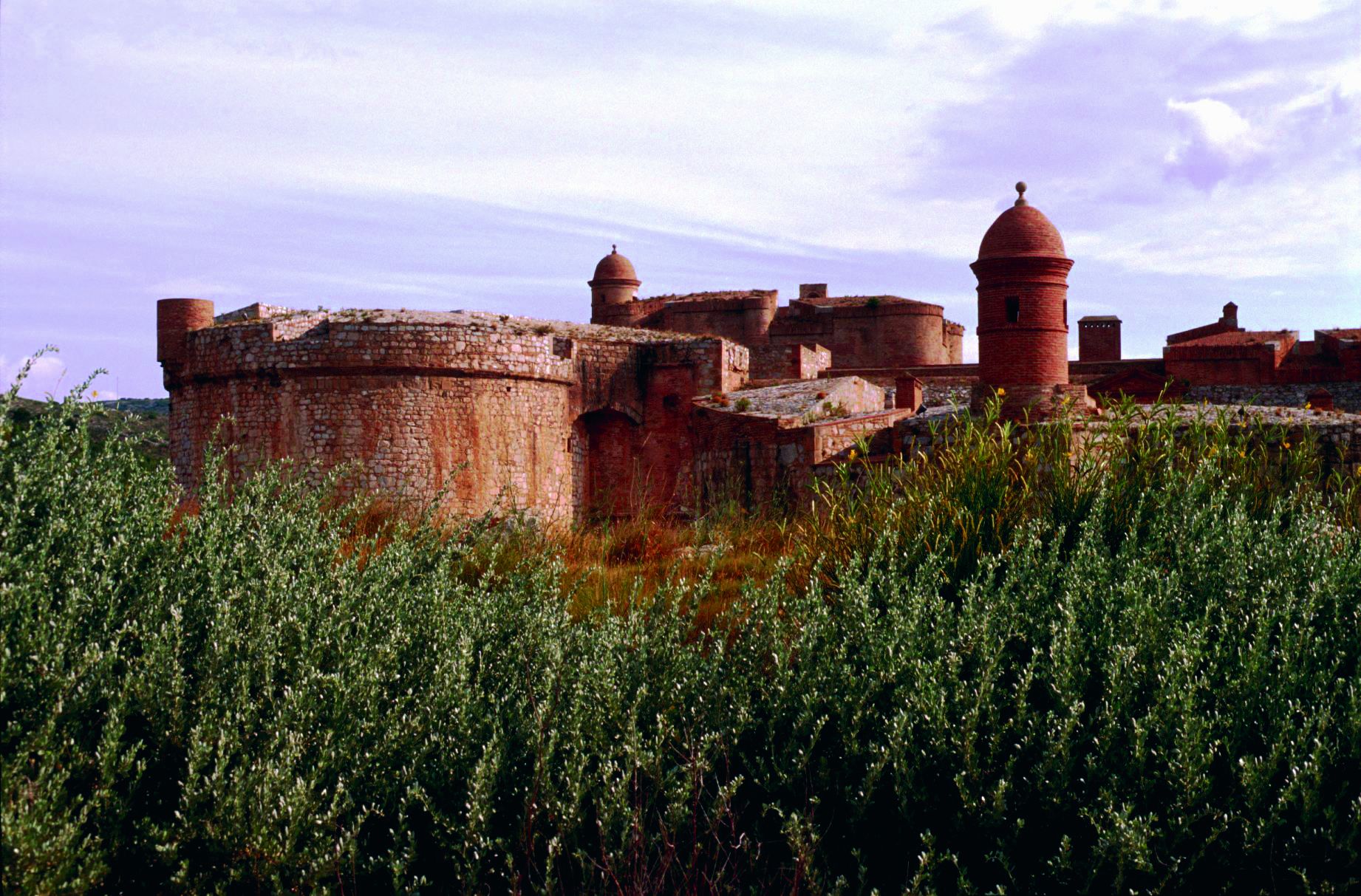
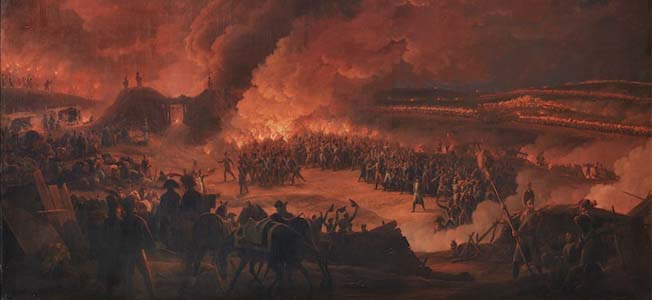
Join The Conversation
Comments
View All Comments